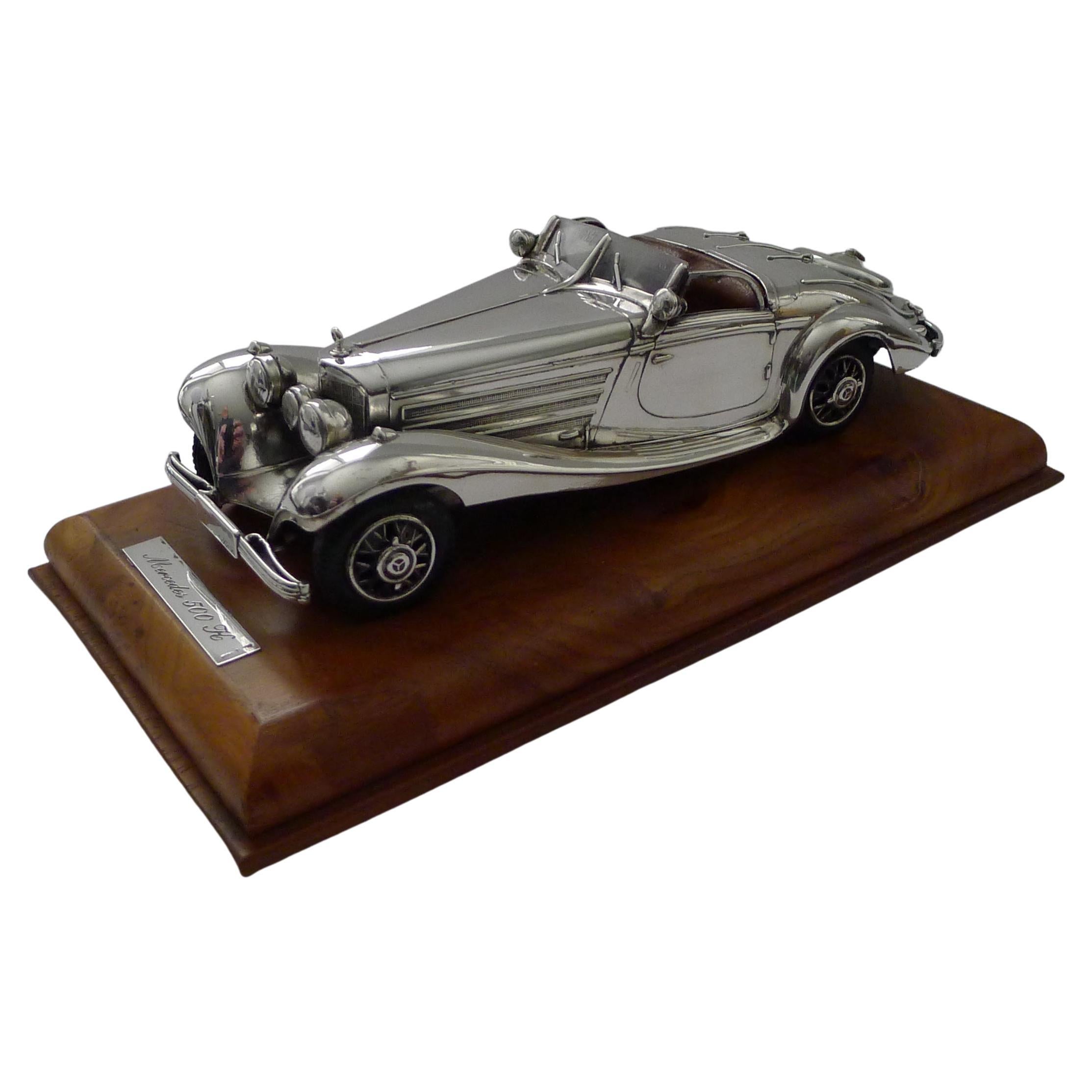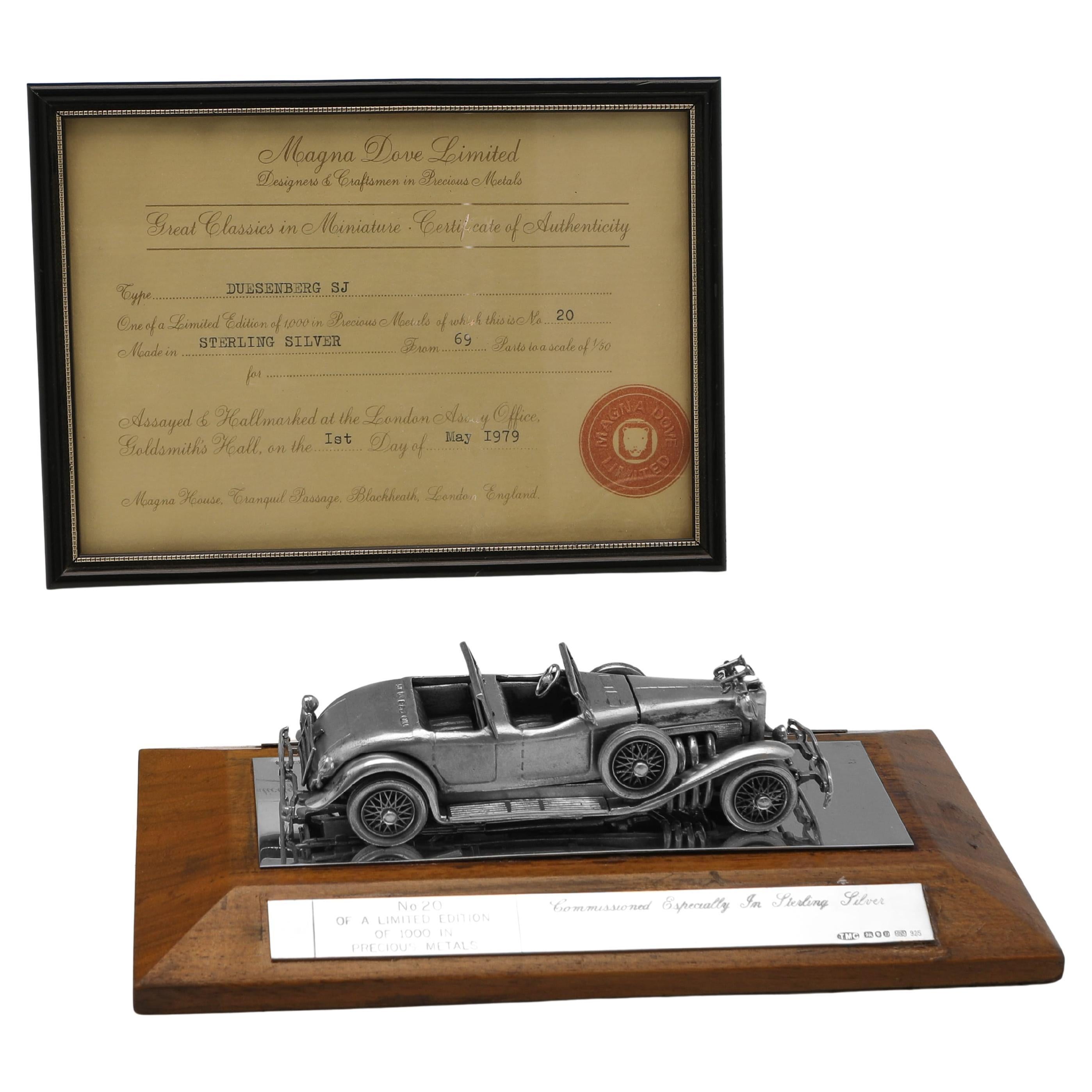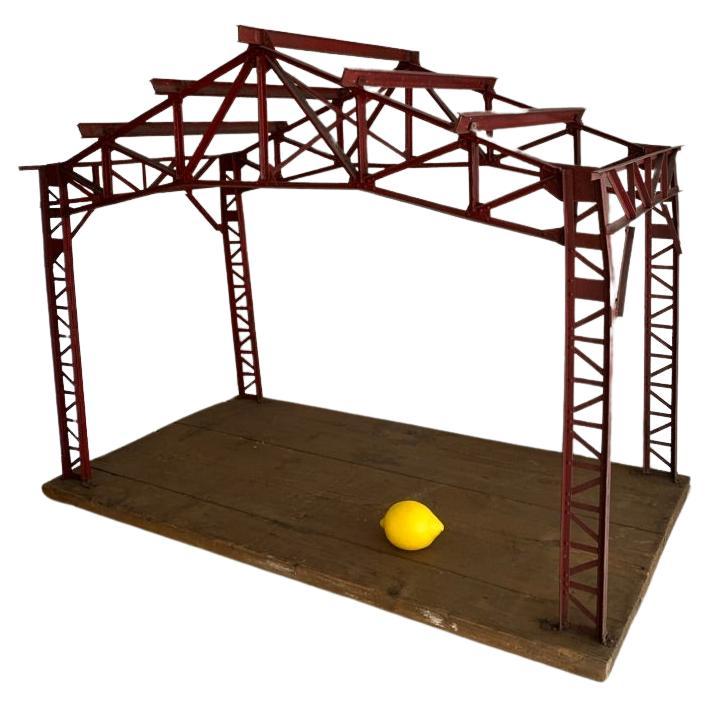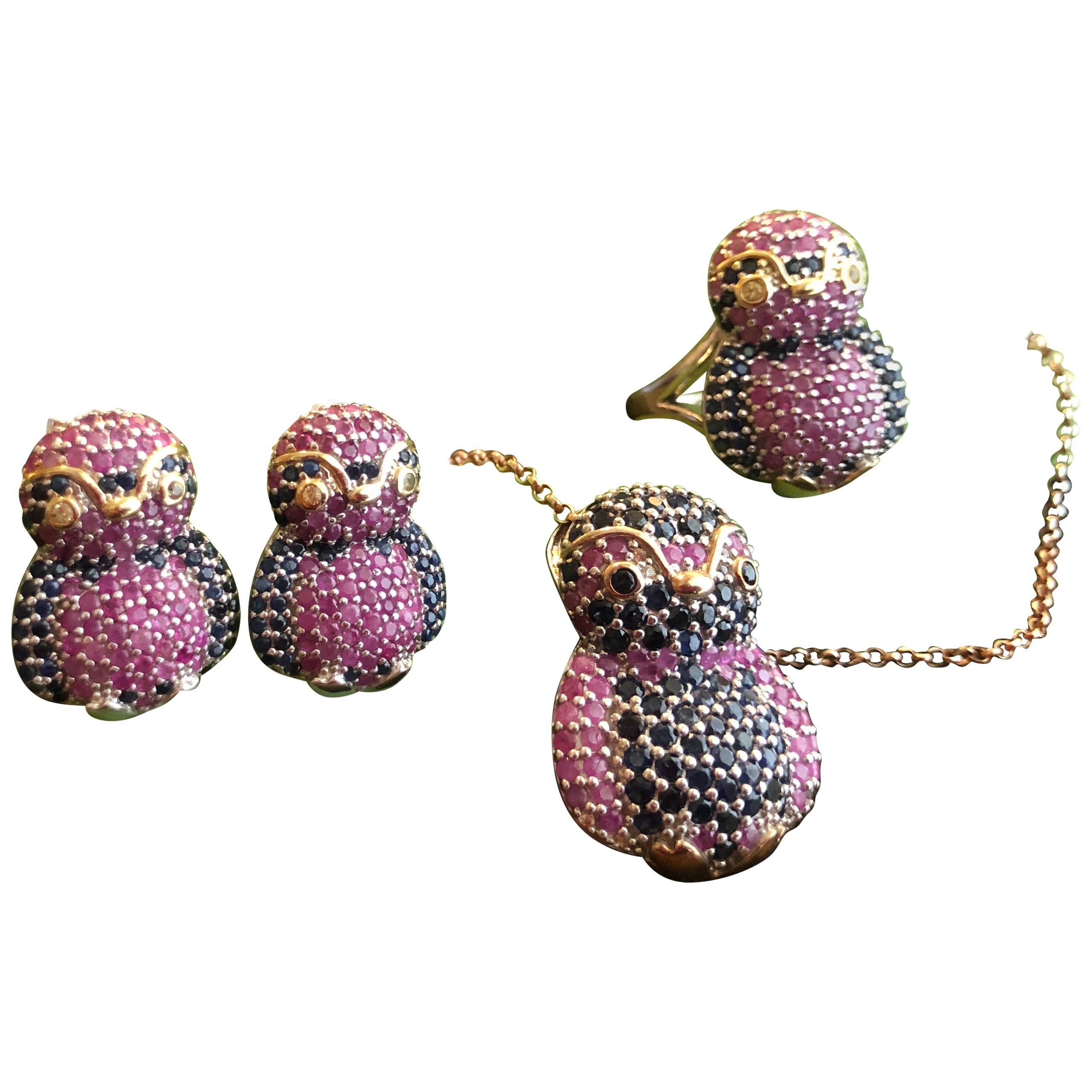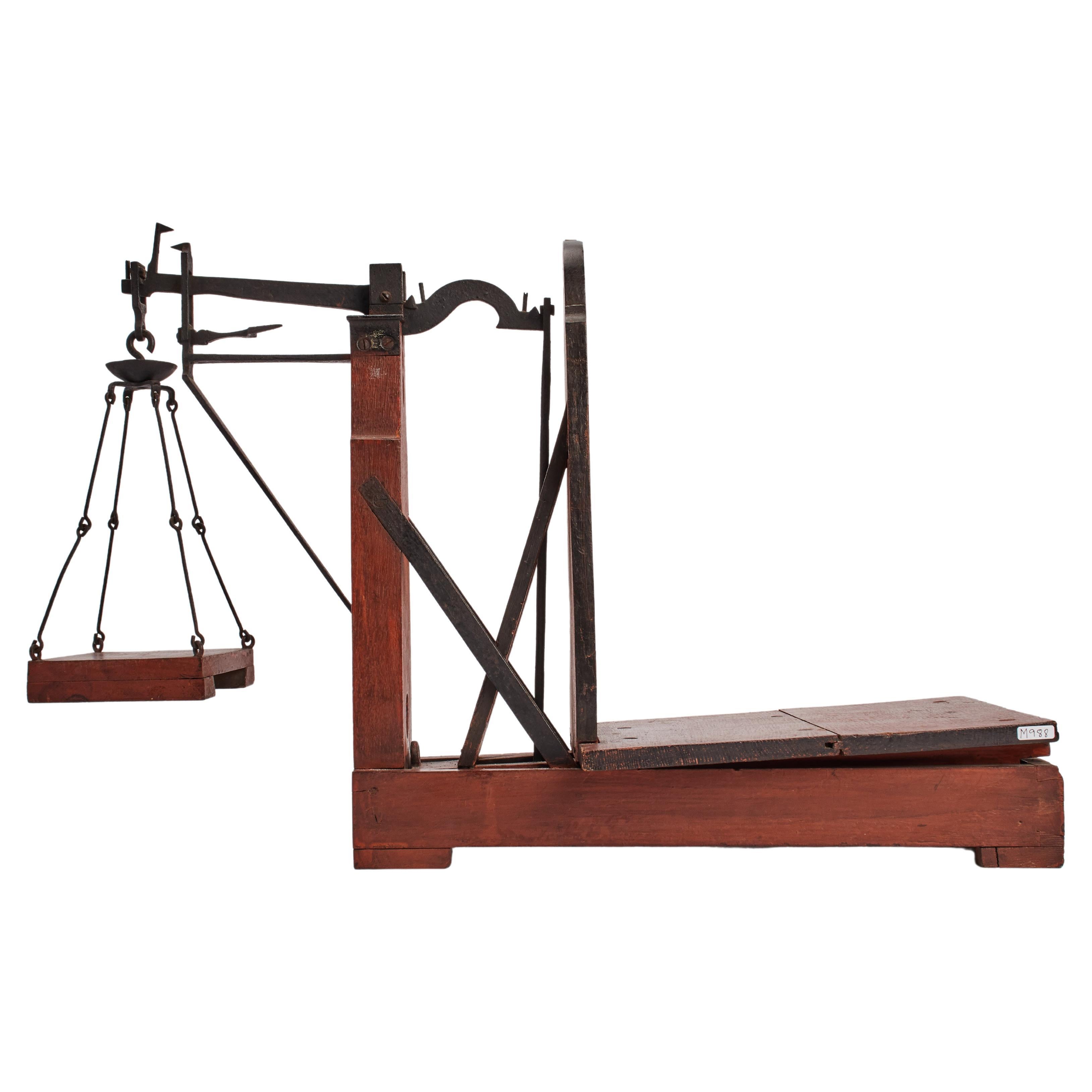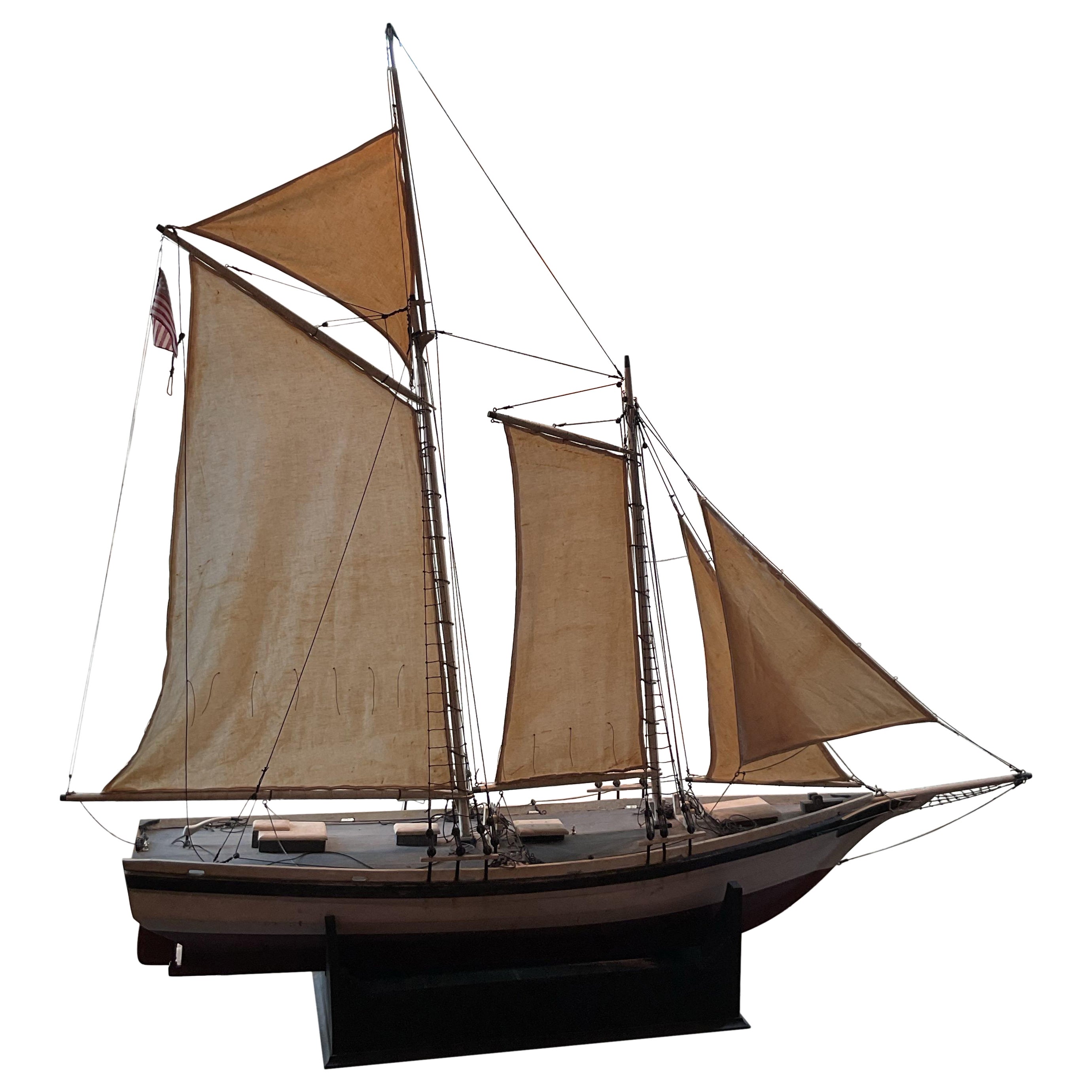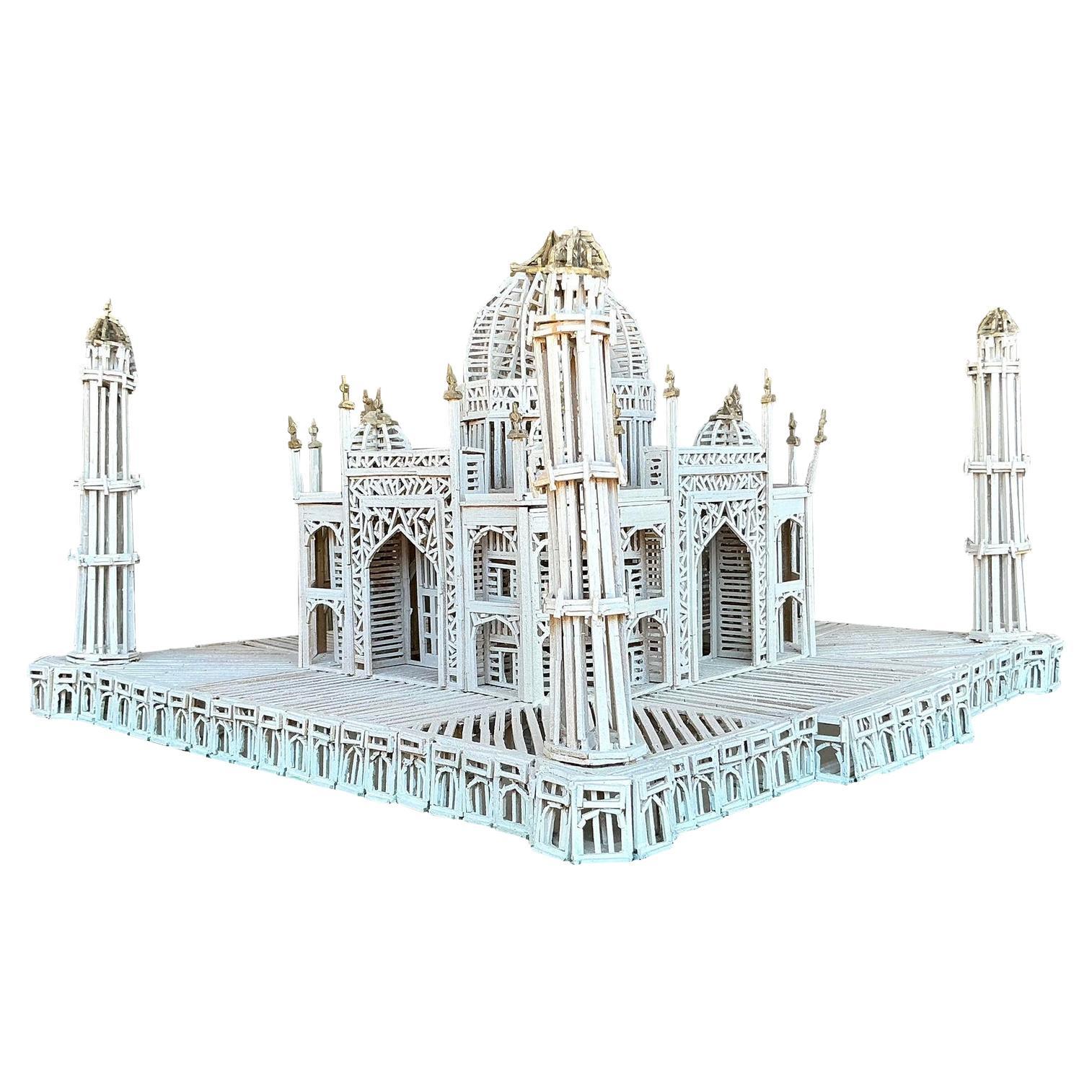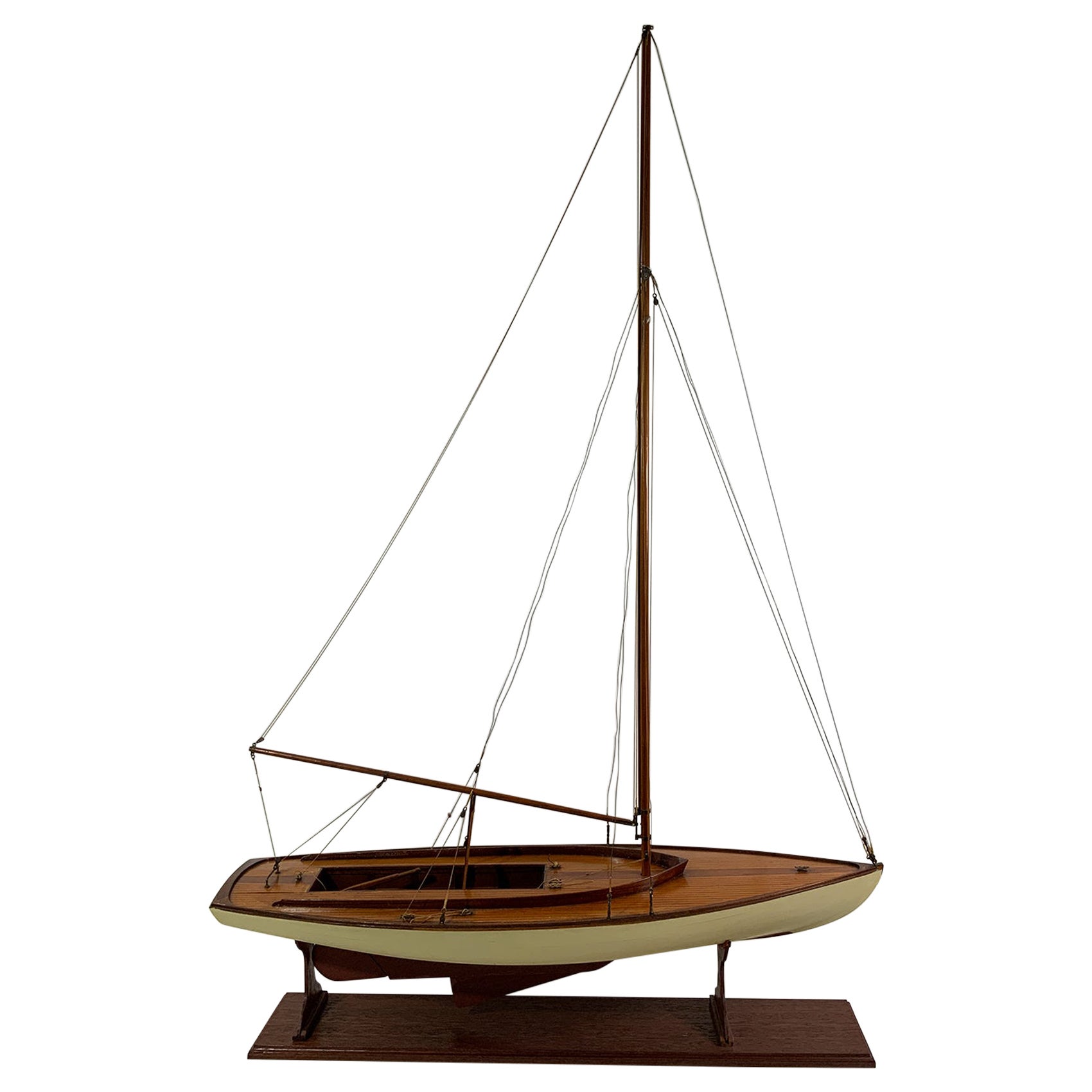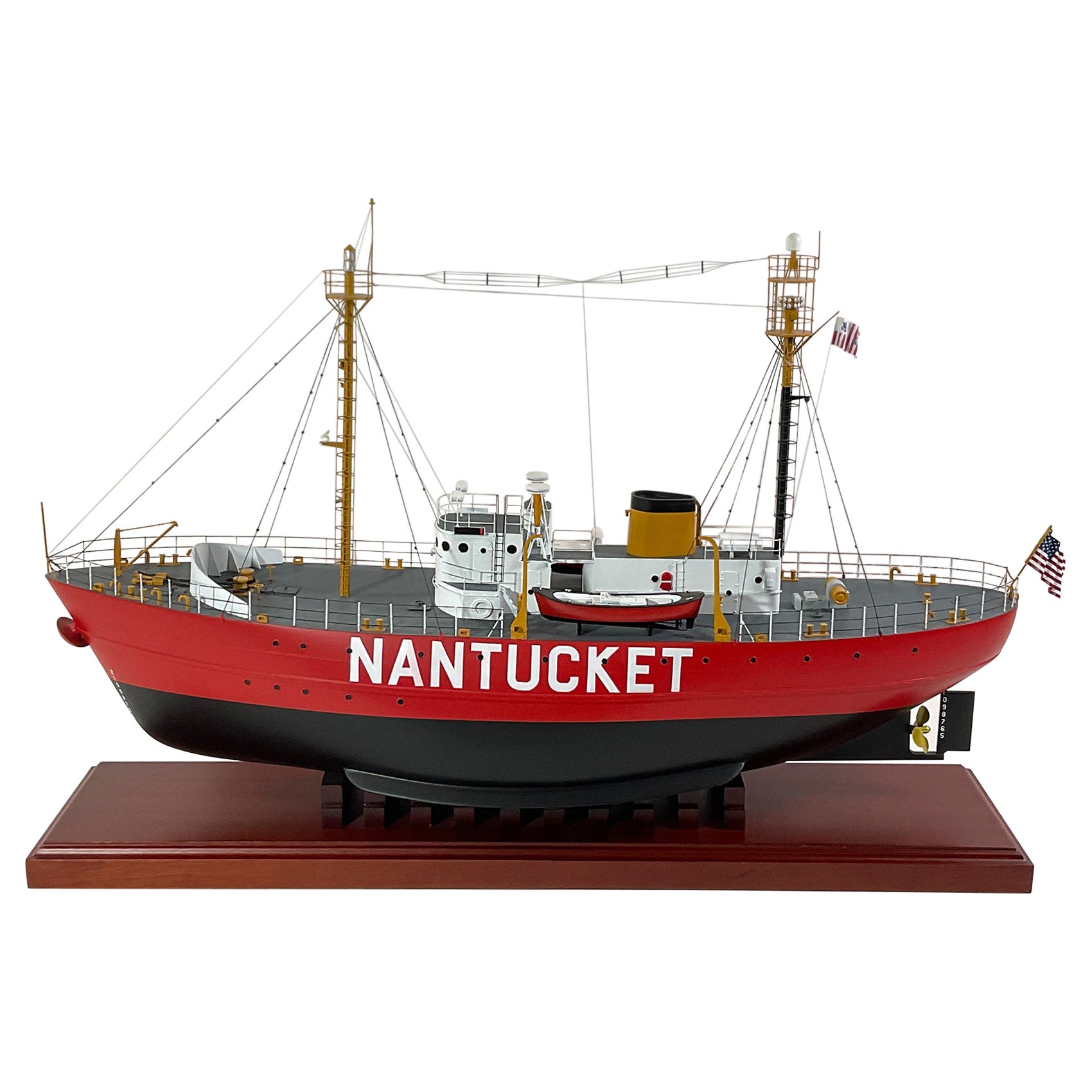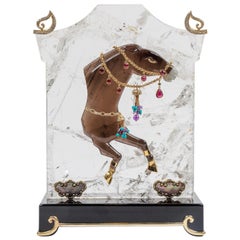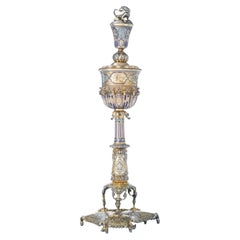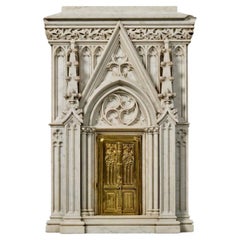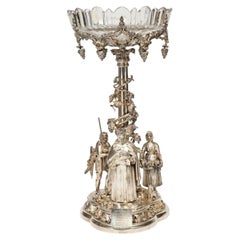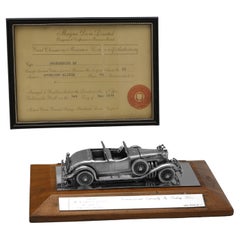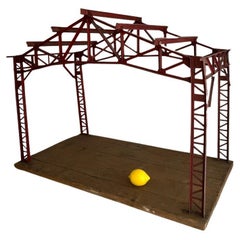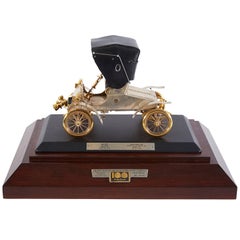
Rare Sterling Silver and Gold 1903 Scale Model "A" Ford with Diamonds and Rubies
View Similar Items
Want more images or videos?
Request additional images or videos from the seller
1 of 11
Rare Sterling Silver and Gold 1903 Scale Model "A" Ford with Diamonds and Rubies
$15,000List Price
About the Item
- Dimensions:Height: 10 in (25.4 cm)Width: 13 in (33.02 cm)Depth: 6 in (15.24 cm)
- Materials and Techniques:
- Place of Origin:
- Period:1900-1909
- Date of Manufacture:circa 1903
- Condition:
- Seller Location:Queens, NY
- Reference Number:1stDibs: f179821703317071743fs
About the Seller
5.0
Vetted Professional Seller
Every seller passes strict standards for authenticity and reliability
Established in 1980
1stDibs seller since 2016
63 sales on 1stDibs
Typical response time: 5 hours
Authenticity Guarantee
In the unlikely event there’s an issue with an item’s authenticity, contact us within 1 year for a full refund. DetailsMoney-Back Guarantee
If your item is not as described, is damaged in transit, or does not arrive, contact us within 7 days for a full refund. Details24-Hour Cancellation
You have a 24-hour grace period in which to reconsider your purchase, with no questions asked.Vetted Professional Sellers
Our world-class sellers must adhere to strict standards for service and quality, maintaining the integrity of our listings.Price-Match Guarantee
If you find that a seller listed the same item for a lower price elsewhere, we’ll match it.Trusted Global Delivery
Our best-in-class carrier network provides specialized shipping options worldwide, including custom delivery.More From This Seller
View AllMellerio Paris, A French Gold, Diamonds, Silver, and Smoky Quartz Carved Horse
By Mellerio
Located in Queens, NY
Mellerio Paris, A French Gold, Diamonds, Silver-Gilt, Rock-Crystal, Jade, Mother-Of-Pearl and Smoky Quartz, Carved Horse Sculpture, Jeweled Mounted Object.
An extremely rare and unique, one of a kind French gold, diamonds, Silver-gilt, rock-crystal, jade, obsidian, mother-of-pearl, and smoky quartz carved jeweled sculpture "CHEVAUX DE LEGENDE", "A Legendary Horse" by Mellerio, Paris, circa 1991.
Sitting on black obsidian base, the solid rock-crystal slab is finely applied with a carved smoky -quartz and jade horse with a harness mounted in 18k gold, brilliant -cut diamonds, rubies, turquoise, and amethyst chains and pendants. The top columns adorned with 18k gold and brilliant cut diamond pendants, the bottom with gold and mother of pearl plaques. The obsidian base with a plaque engraved: CHEVAUX DE LEGENDE" / N° 05 / MELLERIO DITS MELLER / PARIS / 5003 D
The piece is in excellent condition and comes with a custom made wood case made for transport. It's very elegant and has French hallmarks throughout. A truly magnificent piece.
Measures 10.5" high x 8.5" wide x 4" deep
Founded in France in 1613 by the descendants of Italian immigrants from the Vigezzo Valley in the north of Italy, Mellerio is one of the oldest jewellery houses in Europe. The family business soon attracted the attention of the Royal Court and Marie Antoinette herself reportedly purchased a precious bracelet featuring 7 cameos surrounded by rubies in 1780. Later on, in the 19th century, Mellerio became the official supplier of the French Royal family and the Court of Netherland.
Mellerio creates many jewellery items, all set with rare gems such as peridots, amethysts, aquamarines, citrines and topaz, applying for a patent, the flexible stem, a very supple and light jewellery mechanism. Mellerio remains also well known for their spectacular series of Art Nouveau jewels, created at the beginning of the 20th century, as well as for the creation of trophies rewarding some of the greatest footfall and tennis players of history. In 1993, the jewellery house launched their first watch collection.
Today, Mellerio has stores in Paris, Japan and Hong Kong.
July 14, 1789: this date is known throughout the world as the beginning of the French Revolution. According to a ledger belonging to House of Mellerio, this was also the day that the jeweler sold a golden key to the Comte de Coutance for 10 livres. This ledger, as well as inventories dating as far back as 1768, are the jeweler’s oldest archives. These archives have continued to grow over the years, as the House, established on rue de la Paix in Paris, still lives on today, still in the hands of the same family from Craveggia, in the North of Italy.
The tumultuous history of the Mellerio family in France probably goes as far back as the Italian wars of the Renaissance, but the first official document proving their commercial activity in Paris dates back to 1613. This document is the famous royal warrant awarded by Marie de Medici to a number of Italian families established along the rue des Lombards, including the Mellerios, allowing them to sell “small jewelery items”, therefore granting them a small exception to the traditional monopoly enjoyed by Parisian jewelers. At that time, powerful corporations regulated the operations and customs of Parisian business, but thanks to this exceptional warrant, the Mellerios managed to escape the confines of this framework. Today, this wax-sealed document is kept at the city hall of Craveggia.
From 1613 to the Revolution, the Mellerios lived between France and Italy. The corporations tried many times to put an end to their trade privileges, but all in vain, as a dynasty of sovereigns renewed the warrant. Always marrying and often retiring in Craveggia, the Mellerios continued to maintain their jewelry business in Paris. At first, they did this without a shop. Wearing backpacks (wooden boxes divided into small compartments where jewels were kept), they would tour town fairs around Paris and royal castles.
This is how Jean-Baptiste Mellerio (1765-1850) is said to have sold a bracelet set with rubies and Antique cameos to Marie-Antoinette, which still exists today. Many elements seem to prove the veracity of this anecdote. The queen was particularly fond of cameos, which cover the entire background of her famous jewelry cabinet, and ruby was her favorite stone after diamond. The famous bracelet, reacquired a few years ago by the House of Mellerio, is indeed an 18th century jewel, set with antique cameos representing the profiles of Roman emperors. Two branches of the family were operating in Paris during this time, under the reign of Louis XVI: that of Jean-François (1746-1828), the paternal ancestor of the current Mellerios, and that of Jean-Baptiste (1765-1850).
The French Revolution forced them to return to Italy. However, both Jean-Baptiste and François Mellerio (1772-1843), who was the son of Jean-François, were eventually able to return to Paris after the founding of the Consulate. Jean-Baptiste opened a shop at the Iron Crown of rue Vivienne, and François opened his at the Palais des Tuileries, rue du Coq Saint-Honoré. His well-organized order books give an idea of his high-ranking clientele during the “Old Regime”, among which were the Comte and Comtesse Octave de Segur, the Marquise (later Duchess) de Tourzel, former governess of the royal children, and her daughter, the Comtesse de Bearn, the Craufurds -who organized the flight to Varennes, the Duc and Duchess de Gramont, the Comtesse de Boigne, and Madame de Souza, Talleyrand’s mistress.
We also see the names of the imperial family: Empress Josephine, the Queen of Holland, Princess Elisa, Caroline and Pauline. At that time, the House of Mellerio specialized, among other things, in the trade of antique cameos, a newly fashionable genre of jewel that captured the imagination of all the princesses and noble women of the time.
The years of the Restauration and July Monarchy were among the most glorious. The Bourbons were back on the throne, and the clientele of the House of Mellerio had regained its former wealth. Mellerio supplied Louis-Philippe, Duke of Orléans, as well as his mother, wife and sister, with sumptuous jewels, including a set of emeralds made piece by piece, while the Duke of Bourbon, last prince of the House of Condé, offered diamonds to his mistress, the scheming Baronne de Feucheres, and Monsieur de LaFayette also bought cameos for one of his granddaughters. For the first time, Mellerio ventured into the world of arts in 1815, when Carlotta Grisi, a famous dancer who created Giselle, as well as an actress named Rachel, bought jewels at the Mellerio store on rue de la Paix.
1848 marked a new turning point. France once again became a Republic. François Mellerio handed the company over to his son, Jean, and the latter decided to travel to Spain to build a new clientele. He later became one of the jewelers of the royal family, and met Eugénie de Montijo, who remained a faithful client when she became empress of the French people. The Imperial years were lavish. During the Second Empire, Paris was a pageant of crinoline dresses designed by Worth, while jewels by Mellerio, Worth’s neighbour on the rue de la Paix, adorned the noble women of the Tuileries court.
The Empress bought pearls. Mathilde Bonaparte...
Category
20th Century French Mounted Objects
Materials
Rock Crystal, Jade, Quartz, Gold, Silver
A Rare and Exquisite Silver, Enameled Chalice by Jules Wièse and Froment-Meurice
By François-Désiré Froment-Meurice
Located in Queens, NY
A Rare and Exquisite French Silver and Enameled Two-Compartment Chalice Cup by Jules Wièse for François-Désiré Froment-Meurice, circa 1850
This exceptional 19th-century chalice cup,...
Category
Antique 19th Century French Religious Items
Materials
Silver, Enamel
$24,500 Sale Price
30% Off
Rare Monumental Italian Carved Carrara Marble Model of a Cathedral
Located in Queens, NY
A Rare and Monumental Italian Carved Carrara Marble Model of a Cathedral, Rome, 19th century, circa 1840.
Possibly a representation of Cathedral of Santa Maria del Fiore in Florence Italy.
The Italian Renaissance is renowned for its magnificent works of art and architecture, which are admired to this day for their grandeur and intricate details. Among the most impressive examples of this era are the rare and monumental carved Carrara marble models of cathedrals...
Category
Antique 19th Century Italian Gothic Architectural Elements
Materials
Carrara Marble
$87,500 Sale Price
50% Off
A Rare 1859 Elkington Silvered Bronze Victorian "Trophy" Centerpiece
By Elkington Mason & Co.
Located in Queens, NY
A Rare and Historic 1859 Elkington Silvered Bronze Victorian Centerpiece with Cut-Glass Bowl.
Presenting a magnificent Victorian silvered bronze centerpiece of unmatched rarity and importance, crafted by the renowned Elkington Mason & Co., Birmingham, in 1859. This exceptional work, complete with its original cut-glass bowl, epitomizes 19th-century British craftsmanship and artistry. Hallmarked to the base, this centerpiece showcases intricate sculptural details, embodying a high level of technical prowess and aesthetic refinement characteristic of Elkington's celebrated works.
The centerpiece's striking design features three meticulously rendered figures—a young hunter, a friar, and a fishmonger—each embodying elements of Victorian life and industry. At their feet, a loyal spaniel and various game highlight the naturalistic approach to the composition, enhanced by the masterful chasing and dynamic form. This sculptural ensemble rests on an elaborately decorated base, exuding both grandeur and narrative depth.
Adding profound historical value are two engraved plaques. The first, dated “January 28, 1859,” reads: “Presented to William Johnson Esq. as a token of respect & esteem by the workpeople in the employ of Messrs Richard Johnson & Brother, Manchester.” The second, an inscription from 1941, states: “Worshipful Company of Tin Plate Workers, Alias Wire Workers of the City of London, Presented by Arthur Laurence Johnson M.A., Grandson of William Johnson, both Wire Workers, with his Daughter Eleanor Morton Johnson, a Freeman of the Company, to commemorate his Mastership 1941-42.”
These inscriptions chart a rich lineage, connecting the Johnson family to pivotal moments in industrial history. William Johnson, alongside his brother Richard, assumed leadership of a wire-drawing firm in 1838, which would later become Richard Johnson & Nephew Ltd. Their contributions included providing galvanized armored wire for the historic 1857 transatlantic telegraph cable...
Category
Antique 19th Century British Victorian Centerpieces
Materials
Metal, Bronze
Rare English Silver-Gilt Book-Form Chess and Backgammon Game Board, circa 1976
By Asprey & Garrard Limited
Located in Queens, NY
Rare English silver-gilt book-form chess and backgammon game board, circa 1976.
This exceptional and rare solid silver chess board converts into a backgammon board and can also be placed in a bookshelf to add more opulence. (3 in 1).
This was most definitely a private commissioned piece by the House of Garrard...
Category
20th Century British Games
Materials
Silver
A Rare Alexis Falize Antique Gold and Cloisonné Enamel Locket, Circa 1867
By Falize Frères
Located in Queens, NY
A Rare Alexis Falize Antique Gold and Cloisonné Enamel Locket, Circa 1867
This exquisite oval-shaped locket, crafted circa 1869, epitomizes the fusion of French artistry and Japanese aesthetic that characterized Alexis Falize's work during the late 19th century. The obverse features a meticulously rendered cloisonné enamel scene of a bird perched gracefully on a branch, while the reverse presents a serene landscape, showcasing Falize's mastery of the cloisonné technique and his deep appreciation for Japanese motifs.
The locket is housed in its original Japanese silk box, reflecting the authenticity and preservation of this remarkable piece. Falize, a distinguished Parisian jeweler (1811–1898), was profoundly influenced by Japanese and Chinese art, integrating Oriental motifs and palettes into his creations. This fascination was part of the broader Japonisme movement that swept through Europe following Japan's opening to Western trade in 1854, introducing Japanese decorative arts to a captivated Western audience.
Employing the cloisonné enamel technique—a method prevalent in traditional Japanese and Chinese metalwork—Falize delineated intricate designs using fine metal wires to create compartments (cloisons), which were then filled with vibrant enamels. This locket exemplifies such craftsmanship, with its vivid colors and precise detailing. Notably, Falize collaborated with esteemed enameller Antoine Tard, renowned for his Oriental-style cloisonné enamels. Tard's exceptional skill earned him accolades, including a gold collaborator’s medal at the 1867 Exposition Universelle in Paris. Their partnership produced some of the most celebrated cloisonné jewels of the era.
Comparable works by Falize are held in prestigious institutions worldwide. The British Museum houses a gold locket adorned with cloisonné enamel by Falize, highlighting the significance of his work in their collection. The Metropolitan Museum of Art features a reversible brooch attributed to Falize, further exemplifying his expertise in cloisonné enamel. Additionally, the Cleveland Museum of Art acquired a similar cloisonné locket marked by Falize, underscoring the widespread recognition of his craftsmanship. The Victoria and Albert Museum and the Schmuckmuseum in Pforzheim also include Falize's cloisonné enamelled lockets in their collections, attesting to the enduring legacy of his work.
In the realm of private collections, Wartski London has featured rare cloisonné...
Category
Antique 19th Century French Collectible Jewelry
Materials
Gold, Enamel
You May Also Like
Scale Model Vintage Sterling Silver Mercedes 500 K, circa 1980
Located in Bath, GB
Beautifully executed along with it's original solid wooden plinth. Both the sterling silver label and the car have matching hallmarked for 925 silver and the Italian maker mark numbe...
Category
Vintage 1980s Italian Modern Models and Miniatures
Materials
Sterling Silver
Limited Edition scale Sterling silver model of a Duesenberg SJ Torpedo Phaeton
Located in London, London
Hallmarked in London in 1979 by Magna Dove Ltd, this very handsome, Sterling Silver Model of a Duesenberg SJ Torpedo Phaeton, is number 20 of a limited edition of 1000 made for The M...
Category
Vintage 1970s English Modern Models and Miniatures
Materials
Sterling Silver
Scale Model Sterling Silver Boeing 757-200 Jet Aircraft by Garrard and Co c1984
By Garrard & Co. Ltd.
Located in London, GB
Exceptionally rare hallmarked silver Boeing 757–200 jet aircraft model; London 1984. With makers mark for Garrard and Co., who at the time, were the Crown...
Category
Vintage 1980s English Aviation Objects
Materials
Silver
Scale Model Building
Located in Hellerup, DK
Antique French hand built metal on wood scale model of a buildings inner construction with many details. The scale model is made of riveted metal and has great patina.
Category
Antique Early 1900s French Models and Miniatures
Materials
Iron
$1,512
Vintage Italian Jewellery Set in Sterling Silver with Sapphires and Rubies
Located in Sofia, BG
Italian jewellery set "Pinguin" made in sterling silver 925 and decorated with multicolored sapphires and rubies.
The neckless is 45 cm long is 7.3 gr., the earrings are 5.70 gr. an...
Category
Mid-20th Century Italian Collectible Jewelry
Materials
Sterling Silver
Sterling Silver and Paste Set Model of a Gentleman
By Edwin Thompson Bryant
Located in London, London
Carrying import marks for London, 1902 by Edwin Thompson Bryant, this handsome, antique silver model of a Gentleman, is wonderfully made with red and blue set paste to the Stand and ...
Category
Antique Early 1900s English Edwardian Sterling Silver
Materials
Sterling Silver
Recently Viewed
View AllMore Ways To Browse
Anniversary Silver Plate
Sterling Silver Presentation Plate
Large Coffee Grinder
T C F Co Antique Furniture
Used Chain Stitch Machine
Vintage 1950s Gas Station
Abraham Lincoln Engraving
American Civil War Sword
Antique Gavel
Antique Indentures
Antique Martha Washington
Antique Masonic Memorabilia
Antique Police Memorabilia
Christmas Tree Topper
Flak Binoculars
John Quincy Adams
Judges Gavel
Mt Vernon Antique Furniture
